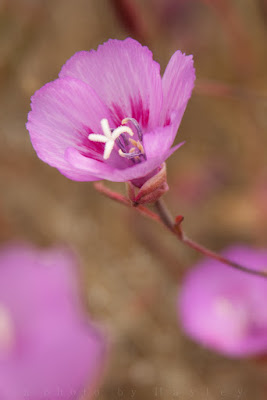One of my favorite parts of the flora of shady forests are the achlorophyllous plants, such as coralroot (
Corallorhyza sp.) and other plants that lack chlorophyll. Since they can't photosynthesize, they borrow nutrients from other organisms. Coralroot gets nutrients from the soil by parasitizing the fungi in the forest floor.
Coralroot, like skunks, come in two species: spotted and striped (
C. maculata and
C. striata). The flowers are borne in a raceme, with several flowers per stem. Before they open, they look like purple asparagus, about a foot tall, sticking out of the duff.
Coralroot aren't an everyday sight in the woods, but often when you do see them, they'll grow in a dense little patch, each single stem sprouting from an underground coral-like rhizome. The lack of green leaves cause the flowers to blend in to the leaf litter, but once you spot them, their peachy color and the interesting red and white patterns of the flowers distinguish them.
Coralroot are found in shady conifer forests of North America. You can easily tell them from
C. striata by the spots on the labellum. In
C. striata, all the petals have red and white stripes parallel to the long edge of the petal. There is one more species,
C. mertensiana, which has a striped labellum, too, but the pattern is less vibrant and distinct.
These photos of
C. maculata were taken May 4, in the Middle Fork Albion River area, South of Mendocino, Ca.

















































